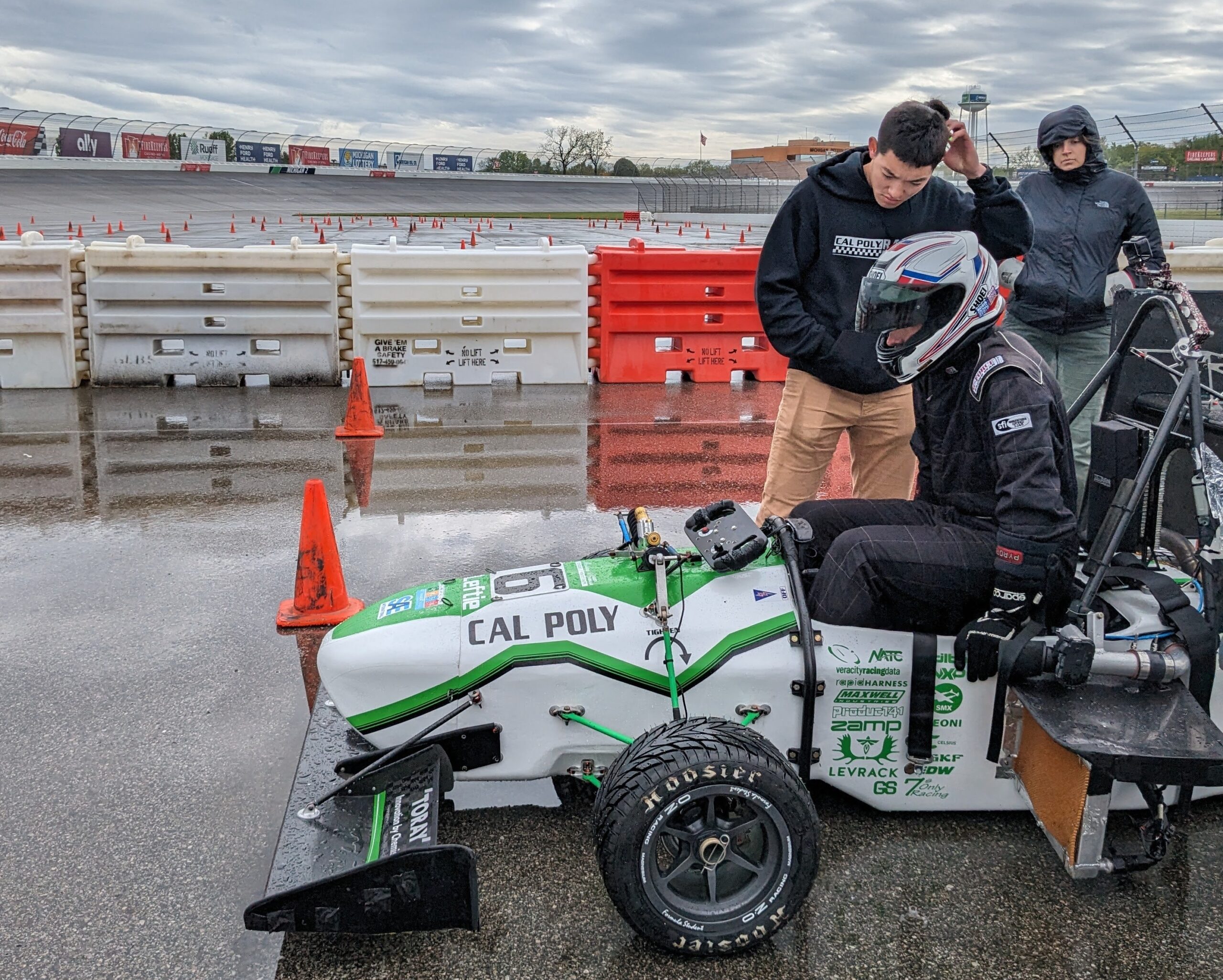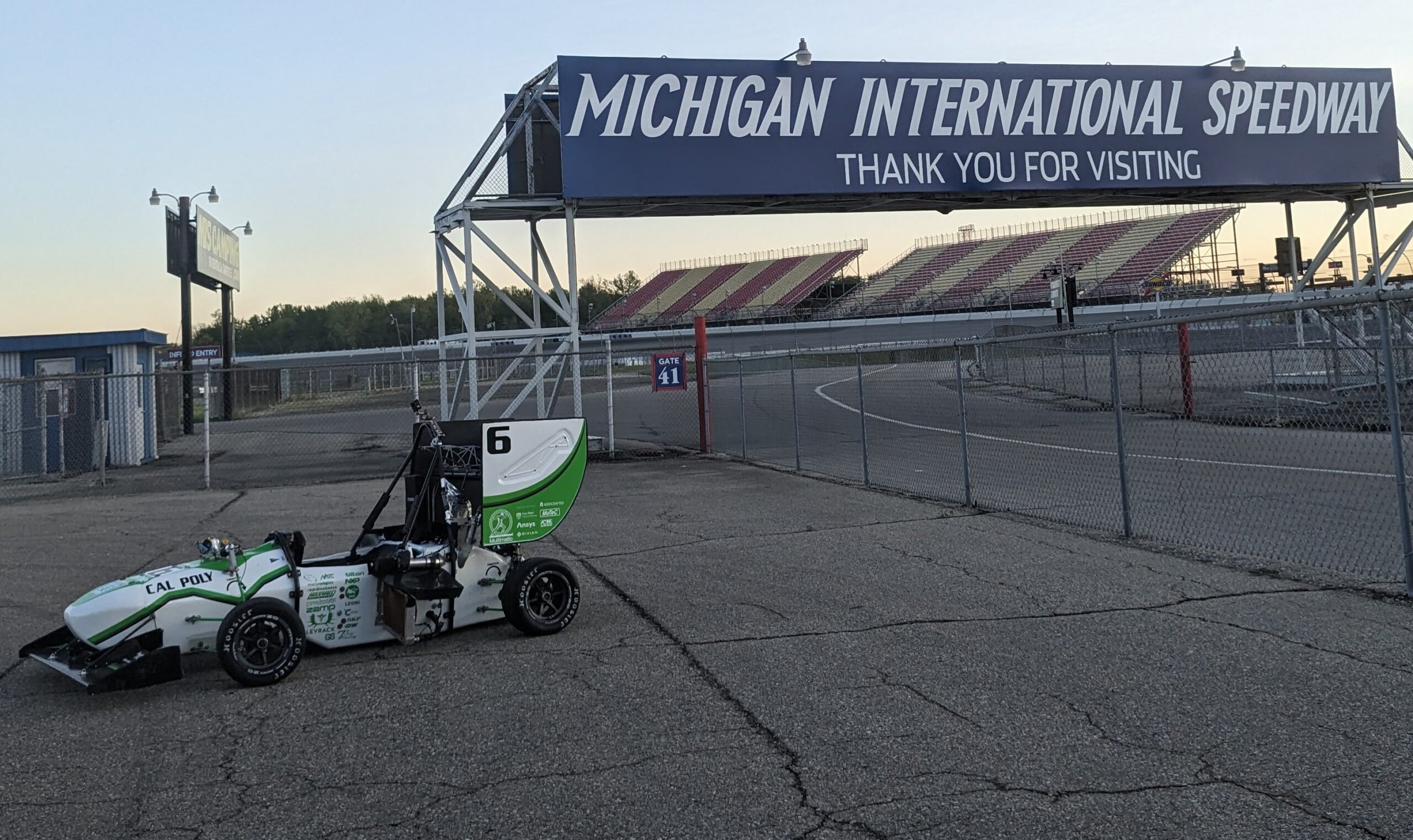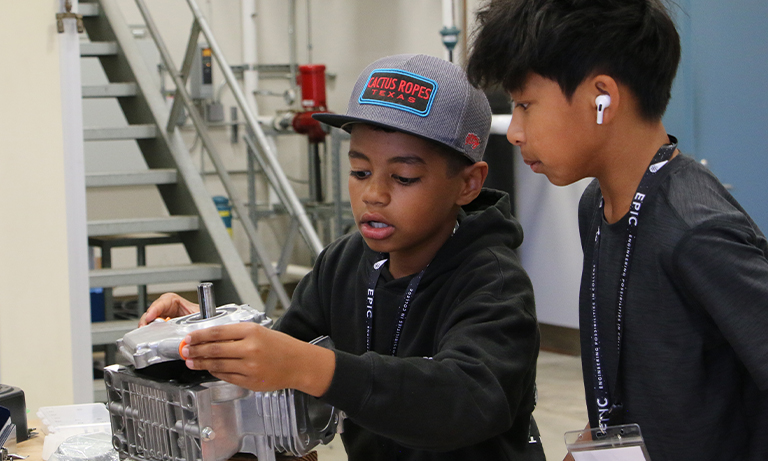Cal Poly Racing’s Formula SAE team made school history at the Michigan International Speedway this month with a monumental performance, marking the end of an era for their combustion car, which they have raced for over 30 years.
Competing against 114 teams, Cal Poly clinched the top spot in the endurance event – the most consequential segment of the multiday competition, specifically designed to test the car’s durability and performance over 10 laps.
Accompanied by strong showings in the skid pad, autocross and acceleration events, the team was on track to achieve an overall second-place finish – the best in its storied history.
“Jumping from last to first in endurance in just two years really shows how much our team has grown and how strong our engineering practices have become,” said team lead Nick Deskins, an industrial engineering student. “I felt confident about our overall victory.”
Their achievement was particularly poignant as it marked the last appearance of Cal Poly Racing’s combustion car in the Formula SAE series. This fall, the team voted to focus exclusively on enhancing their electric vehicle program starting next season.

“Our combustion car was exceptional this year, and I pushed it to its limits in Michigan,” said Hayden Wagner, one of the drivers and the mechanical technical director. “I gave it my all on that track.”
Wagner and driver controls lead Josh Fine each raced five laps of the 2.2-kilometer track, drawing on their extensive experience to gain speed with each lap. The drivers edged out perennial powerhouse Ohio State by a razor-thin margin of 0.9 seconds.
Excitement grew among members as race results came in. However, just an hour before the awards ceremony, a controversial out-of-order penalty assessed to multiple teams dropped Cal Poly from first to eighth place in the endurance event and from a projected second-place overall to sixth.
Securing sixth place was a notable achievement, but the team was deeply frustrated. They accepted their trophy and then began compiling an 11-page protest.
“People don’t know the high level at which we compete and how truly exceptional our team is,” Deskins said. “I’ve seen our team build something incredible over the last four years, and I want that to be recognized.”

Leftie Lucie
Every year, the Formula SAE team designs and builds two Formula-style vehicles – one electric and one combustion – to compete in U.S. race events that draw teams from around the world.
Cal Poly’s team is unique in that it runs combustion and electric vehicles under the same banner, necessitating a split focus between the two projects. After inching toward a decision to stop building a combustion car, members finally made the move this year, though not without a sense of loss.
“Everyone likes the roar of engines, but EVs represent the future and the direction the competition is taking,” Deskins explained, highlighting that the electric races not only attract top-tier competitors but also draw a growing number of sponsors.
They named their final combustion car Leftie as a nod to the fact she’ll soon be left behind, but not without making a statement. With a single cylinder and carbon fiber monocoque, she weighs just 390 pounds and handles like a dream on the track, excelling in agility and mechanical grip.
“We have one of the best handling cars,” Deskins said. “It’s a well-developed, thought-out package.”

While this may have been Leftie’s final Michigan trip, she’ll still play a vital role in training younger club members. Deskins plans to use her at other racing events to provide hands-on experience and to enhance Cal Poly Racing’s visibility through various appearances.
“She has a long road ahead of her,” Wagner noted, expecting her to remain active for the next three or four years.
The team is now squarely focused on Lucie, their electric vehicle, as they prepare to return to Michigan for Formula SAE Electric on June 12-15.
In their first ground-up build since COVID, the team integrated a new set of suspension dampers into a chassis designed by Wagner for his mechanical engineering senior project. For the first time, the car will be powered by a 6-module battery pack.
They added weight, bringing the car to 450 pounds, but gained efficiency, according to electrical technical director Luke Bosworth, a fourth-year electrical engineering student. Bosworth joined the team’s virtual meetings during COVID to make connections, knowing nothing about cars at the time, and never looked back.
“It’s been an insane journey,” said Bosworth. “And it’s made classwork a whole lot more fun.”

A growing number of electrical engineering, computer engineering, and computer science and software engineering majors are taking Cal Poly’s electric car to the next level – a key reason the team made the move to retire their combustion car.
Members will spend the next few weeks testing and driving while waiting to hear from SAE officials about their appeal of the penalty assessed against Leftie. Regardless of the outcome, the club remains focused on its mission to prepare young engineers for successful careers.
“Cal Poly Racing is the embodiment of the Learn by Doing philosophy,” said team manager Brienne Berger, a fourth-year mechanical engineering student. “We learn skills in classes, which we can apply to a real engineering project right away. This allows every member to gain valuable experience that can land them connections, internships and jobs.”
Through a connection in the club, Berger secured an internship at electric vehicle manufacturer Rivian Automotive Inc. and will join a cadre of Cal Poly Racing graduates entering the workforce with invaluable hands-on training.
“Cal Poly Racing’s legacy of excellence and its dedication to developing future leaders in engineering will always drive us forward,” Deskins added.
By Emily Slater



